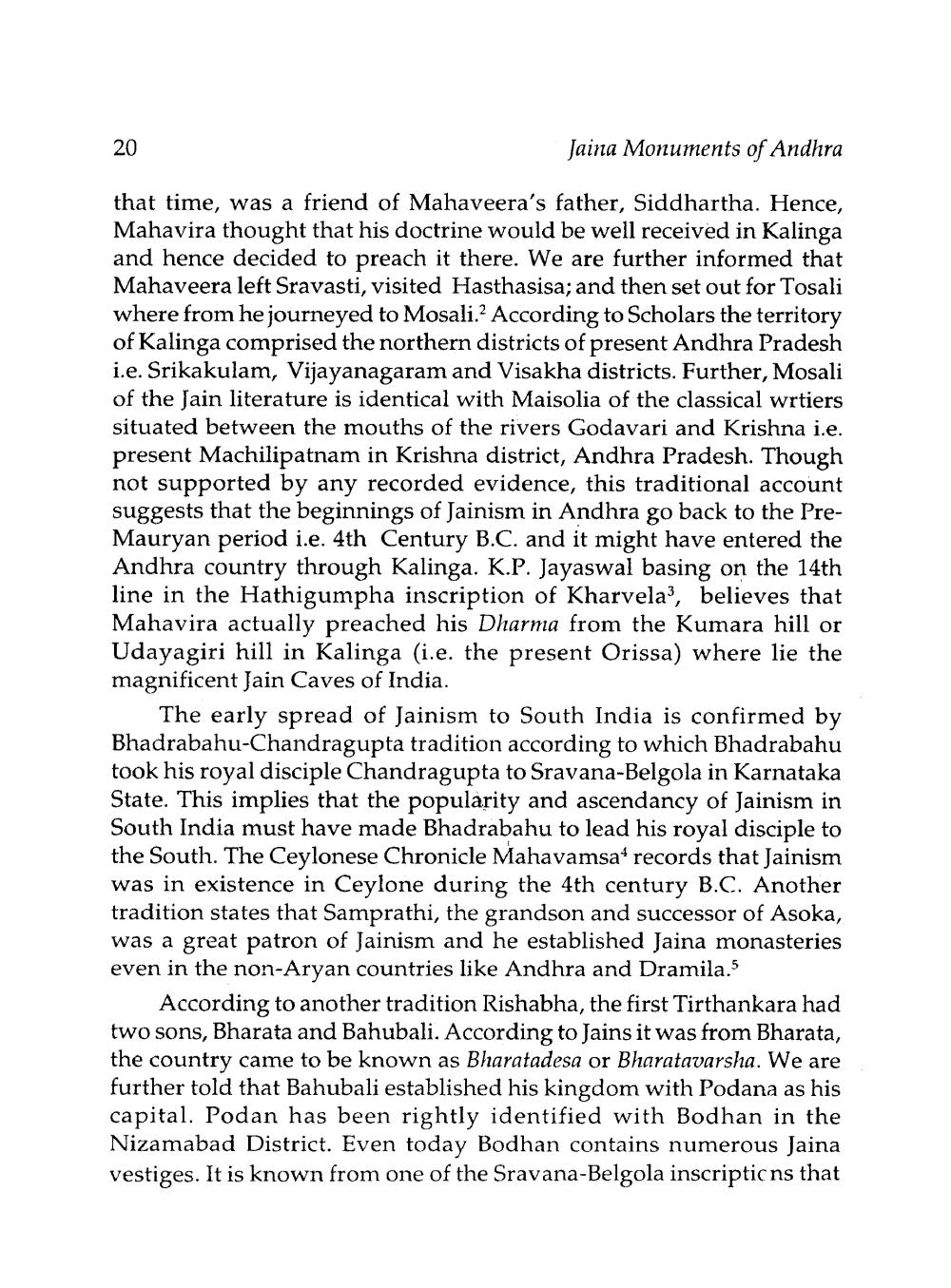________________
Jaina Monuments of Andhra
that time, was a friend of Mahaveera's father, Siddhartha. Hence, Mahavira thought that his doctrine would be well received in Kalinga and hence decided to preach it there. We are further informed that Mahaveera left Sravasti, visited Hasthasisa; and then set out for Tosali where from he journeyed to Mosali.2 According to Scholars the territory of Kalinga comprised the northern districts of present Andhra Pradesh i.e. Srikakulam, Vijayanagaram and Visakha districts. Further, Mosali of the Jain literature is identical with Maisolia of the classical wrtiers situated between the mouths of the rivers Godavari and Krishna i.e. present Machilipatnam in Krishna district, Andhra Pradesh. Though not supported by any recorded evidence, this traditional account suggests that the beginnings of Jainism in Andhra go back to the PreMauryan period i.e. 4th Century B.C. and it might have entered the Andhra country through Kalinga. K.P. Jayaswal basing on the 14th line in the Hathigumpha inscription of Kharvela3, believes that Mahavira actually preached his Dharma from the Kumara hill or Udayagiri hill in Kalinga (i.e. the present Orissa) where lie the magnificent Jain Caves of India.
20
The early spread of Jainism to South India is confirmed by Bhadrabahu-Chandragupta tradition according to which Bhadrabahu took his royal disciple Chandragupta to Sravana-Belgola in Karnataka State. This implies that the popularity and ascendancy of Jainism in South India must have made Bhadrabahu to lead his royal disciple to the South. The Ceylonese Chronicle Mahavamsa1 records that Jainism was in existence in Ceylone during the 4th century B.C. Another tradition states that Samprathi, the grandson and successor of Asoka, was a great patron of Jainism and he established Jaina monasteries even in the non-Aryan countries like Andhra and Dramila.5
According to another tradition Rishabha, the first Tirthankara had two sons, Bharata and Bahubali. According to Jains it was from Bharata, the country came to be known as Bharatadesa or Bharatavarsha. We are further told that Bahubali established his kingdom with Podana as his capital. Podan has been rightly identified with Bodhan in the Nizamabad District. Even today Bodhan contains numerous Jaina vestiges. It is known from one of the Sravana-Belgola inscripticns that




